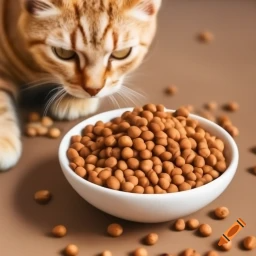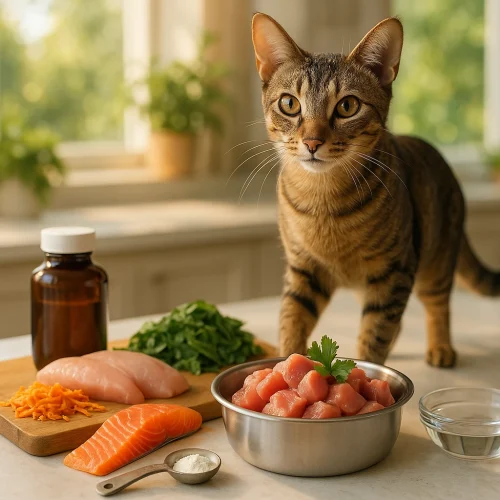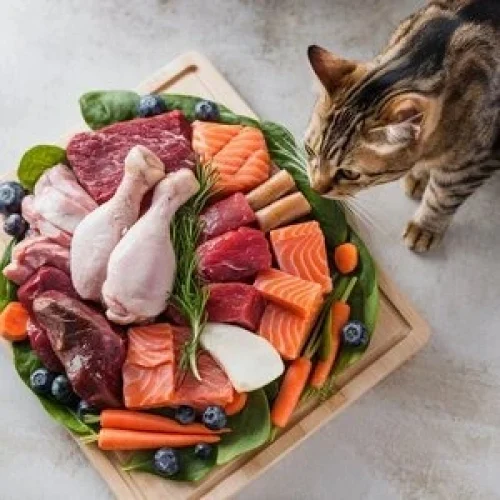Dehydrated Cat Food Market
Did you know experts project the global dehydrated cat food market to grow by 7.5% annually through 2030? While cat owners are abandoning kibble for nutrient-rich, shelf-stable alternatives, the question remains: Is dehydrated food worth the hype? Let’s dig more into it.
What Is Dehydrated Cat Food?
Makers of dehydrated cat food gently cook the product at low temperatures to remove moisture. Therefore, they can preserve nutrients and eliminate the need for artificial preservatives. Unlike kibble, which undergoes heavy processing, or raw diets, which require freezing, dehydrated options are lightweight and easy to store. Additionally, dehydrated cat food retains up to 70% more vitamins than traditional methods. Overall, this makes it a convenient and nutritious choice for pet owners.
How Dried Cat Food Is Made
The Dehydration Process Explained
The dehydration process involves:
Firstly, prepping ingredients: Meat, veggies, and supplements are finely chopped or ground.
After completing this step, the process moves to low-heat drying: During this phase, temperatures
stay below 115°F to protect enzymes and proteins.
Finally, packaging: Vacuum-sealed to ensure a 12–24 month shelf life.
For example, brands like The Honest Kitchen use human-grade beef and organic oats, dehydrating them into bite-sized morsels.to bite-sized morsels.
Top 5 Benefits of Dehydrated Cat Food
Why Cat Owners Are Switching to dehydrated pet food
- Firstly, as a nutritional powerhouse dehydrated pet food retains amino acids like taurine, which is crucial for heart health.
- In addition, it provides digestive relief as it’s easy on sensitive stomachs and contains no fillers like corn or soy.
- Moreover, such cat food offers convenience, as you can simply add water and have it ready in just 5 minutes.
- Furthermore, it’s eco-friendly since it produces less waste compared to canned food.
- Lastly, but equally importantly, it offers versatility as it can be used as a topper, a complete meal, or even a treat.
Stat Alert: A 2022 study found cats fed dehydrated diets had 34% fewer hairballs due to higher moisture content post-rehydration.
Dehydrated vs. Freeze-Dried vs. Kibble
Which Is Best for Your Cat?
| Feature | Dehydrated | Freeze-Dried | Kibble |
| Moisture | 5-8% | 2-5% | 6-10% |
| Prep Time | 5 mins (add water) | None (ready-to-eat) | None |
| Cost per Meal | $$$ | $$$$ | $ |
| Nutrition | High | Very High | Moderate |
Key Takeaway: Dehydrated food strikes a balance between nutrition and affordability, while freeze-dried is pricier but ideal for raw diet enthusiasts.
How to Prepare Dehydrated Cat Food
A Step-by-Step Guide
- Measure: Use 1 part food to 2 parts warm water.
- Wait: Let it sit for 5-10 minutes until soft.
- Serve: Mix with a spoon and check temperature.
Pro Tip: Add bone broth instead of water for picky eaters!
Best Dry Cat Food Brands
Tried-and-Tested Picks
- Stella & Chewy’s: Grain-free, protein-first recipes with probiotics.
- Primal Pet Foods: USDA-certified meats and organic veggies.
- Ziwi Peak: Air-dried in New Zealand with green-lipped mussels for joint health.
Budget Option: Whole Life Pets offers smaller batches under $3/serving.
Is Dehydrated Food Healthier Than Kibble?
Vet-Approved Insights
Yes—but with caveats. Dehydrated food lacks synthetic additives and has 40% more protein than average kibble. However, always check for:
- AAFCO compliance.
- Named protein sources (e.g., “chicken,” not “poultry meal”).
- No artificial colors or flavors.
Case Study: A Persian cat with chronic diarrhea thrived after switching to a dehydrated duck recipe, per PetMD.
Sustainability in Dehydrated Pet Food
Eco-Friendly Choices
- Less packaging: Lightweight bags reduce shipping emissions.
- Upcycled ingredients: Brands like Open Farm use “ugly” veggies that would otherwise go to waste.
DIY Dehydrated Cat Food Recipes
Try This Chicken & Pumpkin Recipe
Ingredients:
- 1 lb chicken breast
- ½ cup pumpkin puree
- 1 tsp fish oil
Steps:
- Slice chicken thinly.
- Dehydrate at 100°F for 12 hours.
- Crumble and mix with pumpkin and oil.
Note: Always consult your vet before DIY diets!
Final Thoughts
Dehydrated cat food blends convenience, nutrition, and sustainability—making it ideal for busy pet parents who prioritize health. Furthermore, with benefits ranging from improved digestion to supporting eco-conscious brands, it’s no wonder that this trend is rapidly gaining popularity.




